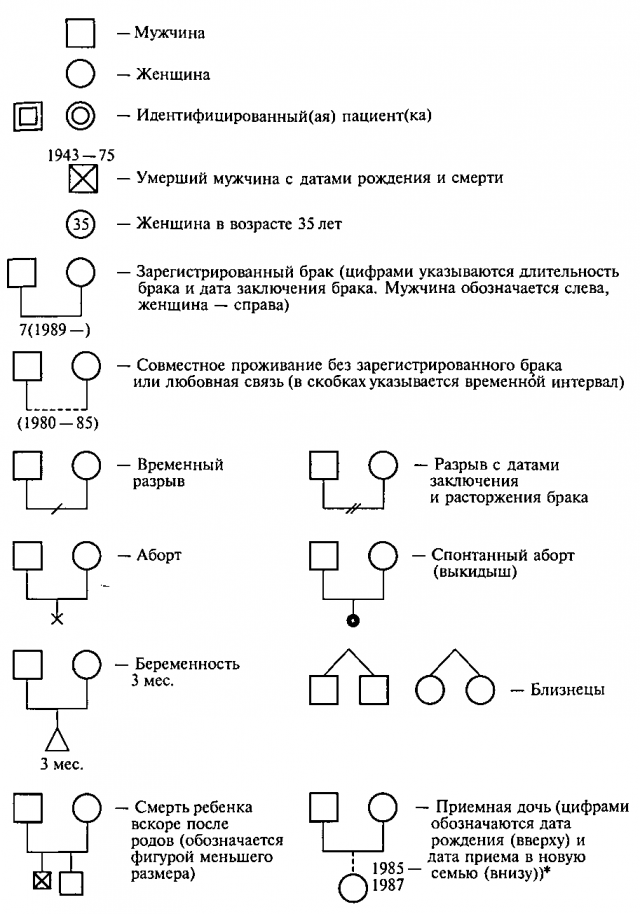
The choice of profession, life partner, place of residence, certain diseases and even the time of death – all this in our life can take place under the influence of the general unconscious. By examining our ancestry, we can find patterns of behavior that have been repeated from generation to generation and that now occupy one place or another in our lives. Being aware of and working through these traumas and scenarios helps you create more space within yourself for yourself and your decisions.
Why is it important to know your family history?
“Imagine you are standing and looking ahead. You have your family behind you and everyone puts their hand on your shoulder. Grandparents stand behind the parents and put their hands on the shoulders of the parents. Behind grandparents are their parents. And such. See the picture above. Imagine how many people are connected to each other for you to be born one day. This is your family. And you belong to him, and therefore you inherit some of his knowledge, ”that is how a psychologist, hypnologist, fairy tale therapist and trainer Natalya Mayorova begins to answer our simple and perhaps banal question.

While we would like to feel our independence and believe that we alone are in control of our lives, this is not entirely true. If we go back to the history of psychoanalysis, it was Sigmund Freud who first put forward the thesis that man has an unconscious. Later, his student Carl Gustav Jung confirmed the concept of the collective unconscious. And Leopold Szondi, a Swiss psychoanalyst, introduced the concept of the family or tribal unconscious – he argued that the fate of a person is determined by his family.
The experiences of our ancestors affect us. One of the affirmations is the phenomenon of intergenerational trauma, that is, trauma that is passed on from generation to generation. In the last few years, psychologists have been turning to him especially often. “The essence of it is that the symptoms that cannot find causes in the client’s personal experience (illness, depression, compulsive disorders, eating disorders, etc.) can be rooted in the trauma of our grandparents,” says analytical psychologist Daria Kostevich. art therapist, intergenerational CPTT therapist.
What is a genogram?
“A genogram is a kind of diagram, a family history map, that depicts all members of an extended family over several generations using special symbols,” explains Daria Kostevich. There is an expanded version of the genogram – the genosociogram. In it, among other things, relationships between family members are indicated.

That is, the genogram is a family tree, but it contains more comprehensive information about relatives: interpersonal relationships within the family, connections, destinies.
Why is it needed?
Thanks to the genogram, it is possible to trace the behavioral patterns, traumas, physical and psychological predispositions and problems transmitted from generation to generation.

Natalya Mayorova, psychologist, hypnologist, fairy tale therapist, trainer
In the genogram, we note the order of birth: who was the first, second, who was the next child, had an abortion or miscarriage, even if the previous child died (such children are also taken into account in order). Thus, it is possible to see if relatives suffering from alcohol, a serious illness, or an unfortunate fate, for example, are systematically linked within the breed. So in the genogram you can see if your children are prone to bad habits, mental illness, relationship tendencies. You can also see why systemic problems arise, such as inability to have children, relationship difficulties, addictions, money problems, debt, premature death.
How is it created?
Based on the advice of our expert psychologists, we have created a step-by-step guide.
- At the bottom of the page, the first person to whom the genogram was made is marked.
- A woman is represented by a circle and a man by a square. The corresponding mark is placed under a sheet of paper.
- Two lines are drawn from it – this is mom and dad. Indicate whether they are married (double-line between them) or divorced (double-lined).
- From each of the parents, respectively, branches leave – their parents, the third generation – grandparents. Each relative must be signed: name and year of birth.
- In addition, children, husbands, siblings, if any, are added to the genogram.
- Now you must understand the demand that interests you – why are you compiling a genogram? You can name several questions from different areas of life at once: relationships, children, health, money, profession.
- In addition, genogram analysis is performed upon request, and information about family members is added. For example, if someone suffers from mental illness, died at an early age, etc.
- After all the characters that are important for the interrogation are depicted, you need to draw lines in different colors, symbolizing the relationship between people. You can then analyze the data and identify recurring family patterns.

A genogram can also be compiled in one of the applications with all the symbols (for example, GenoPro) or in an interview with a psychologist.
To compile a genogram, you need to have a lot of information about relatives. Therefore, before that you need to answer a large number of questions. Natalya Mayorova offers the following list.
Mom, dad, grandparents, parents.
– What kind of children in a row, including abortions, deaths, miscarriages.
– Divorces, how they live, fate in general.
How and when did relatives die?
– Systemic diseases: cancer, schizophrenia, etc.
– Addictions: alcohol, drug addiction, etc.
— Lost, forgotten, unknown.
Now what to do with this information?
The genogram first shows it on a piece of paper and then prints in our minds everything we already know but have not connected with. It brings together all the different data. “Everything that is not accomplished is played an infinite number of times,” says Daria Kostevich. “If we don’t discover and release the ‘ghosts’ of the past, they will affect our lives, preventing us from living it freely and happily.” The genogram shows whose destiny we live, whose destiny we change and who we repeat.

Creating a genogram is only the first step, the second is analysis and refinement to get rid of old links. For people who have never been in therapy this will be quite difficult to work with on their own, so it’s best to do this with a psychologist.
How to get a resource from ancestors?
Let’s move on to something nicer. In addition to injuries and diseases, our ancestors had a huge resource, and the main confirmation of this is our presence on this earth.

Daria Kostevich, analytical psychologist, art therapist, intergenerational CPTT therapist
“Our ancestors had different experiences and formed the wisdom we can rely on in difficult moments of our personal history. The feeling that you are not alone in this world, that there is a huge “river” of ancestors that you are a part of, and that you are an “ancestor in the learning process” provides a deep existential support in a connecting chain of generations.”
To feel this support, you can do some meditation. For example, write a letter to a relative – especially one who was once close to you, but has already died, or that the whole family proudly remembers.
For example, Natalya Mayorova suggests meditating on some kind of emotion. To do this, you need to close your eyes and see how your parents are behind you, their parents are behind them, etc. You have to imagine. “At this time, you will feel a great shield, support and strength of the clan,” says Natalya. “When working with a genogram after sessions, people often feel a surge of energy and some sort of shift.” It is truly a change and it is systemic: people are put in place, the excluded are included, and one’s life is miraculously put in order. This is how space and healing of intergenerational trauma works.
Now the phrase “written in the family” takes on a completely new sound, and most importantly, working with the genogram and the family unconscious allows you to no longer be afraid of these words.
Source: People Talk
Errol Villanueva is an author and lifestyle journalist who writes for The Fashion Vibes. With a passion for exploring the latest trends in fashion, food, travel, and wellness, Errol’s articles are a must-read for anyone interested in living a stylish and fulfilling life.





